Saturn's
Rings
Printable
version
April
18, 2000
Announcements
Saturn's
Rings Preview
-
finish
Jupiter's moons
-
Large
(Galilean) moons
-
Io,
Europa, Ganymede, Callisto
-
Callisto
-
Ice
rock mix
-
surface
not active
-
All
of Jupiter's moons
-
Seeing
Saturn's rings from Earth
-
Now
you see them, now you don't
-
A,
B, C, ..., Cassini division
-
Composition
of rings
-
Structure
of rings
-
Effect
of Saturn's inner Satellites
Callisto
-
Callisto has craters
-
surface no longer active
-
Biggest crater named Valhalla
-
Callisto has no groves or
any sign of geologic activity
-
other than slumping of Valhalla's
rings
-
Valhalla crater probably
4 billion years old
-
No magnetic field
-
Not differentiated
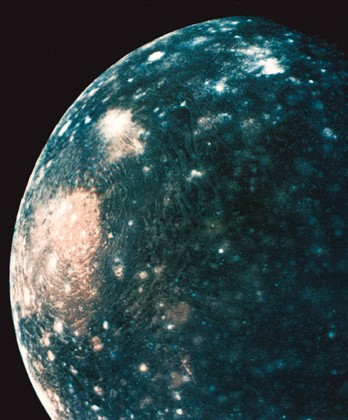
All
of Jupiter's Moons
-
Large
(Galilean) moons:
-
Io,
Europa, Ganymede, Callisto
-
16
moons discovered so far
-
Smallest
is Leda (16 km)
-
Outer
4 orbit backwards (retrograde)
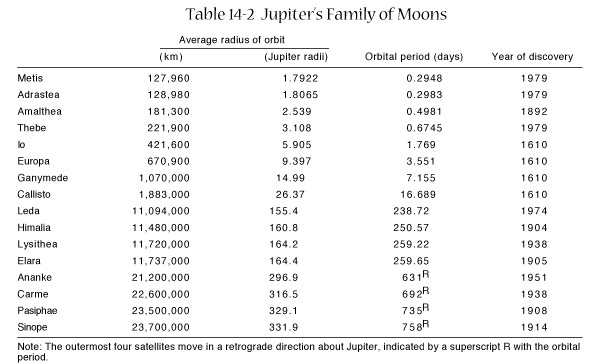
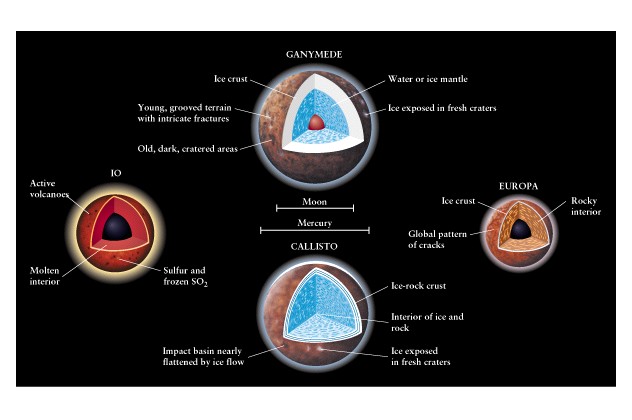
Seeing
Saturn's Rings from Earth
-
Saturn is ~10 AU from Earth
-
compare 5 AU for Jupiter
-
Saturn looks smaller in telescope
-
1610: Galileo saw funny "ears"
-
Ears came and went every
couple of years
-
(now you see them now you
don't)
-
1655: Huygens proposed "ears"
were a thin flat ring
-
inclination of the rings
relative to ecliptic accounted for changes
-
rings aligned with Saturn's
equator
-
In 1675 Giovanni Cassini
first to see gap in rings
-
Cassini division
-
Rings lettered A, B, C ....
Saturn from a good
Earth telescope
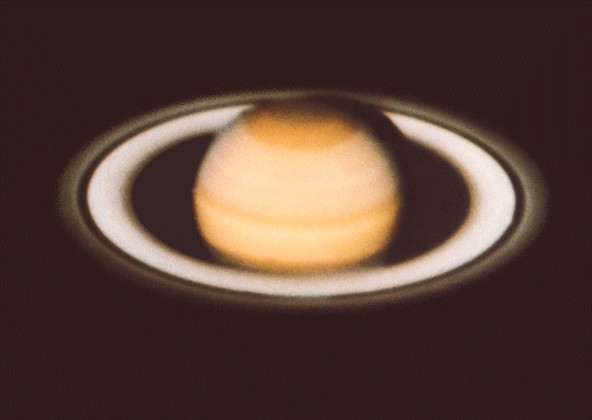
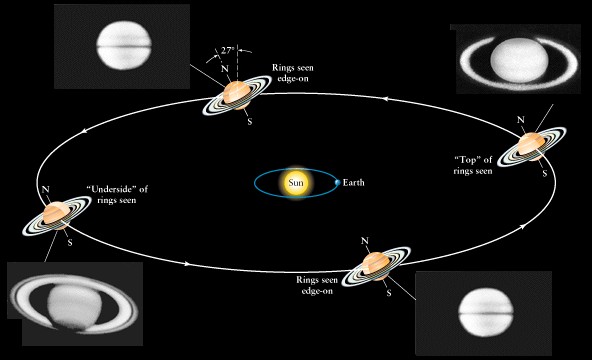
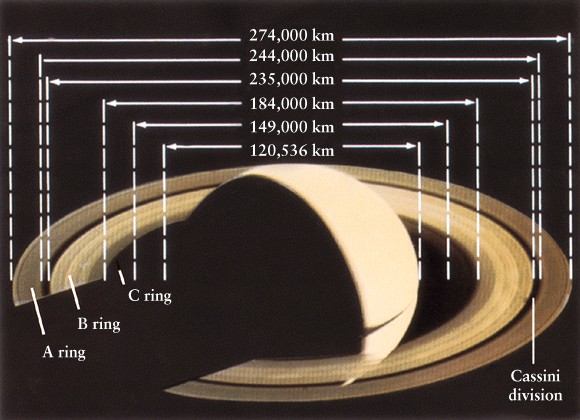
Composition
of Rings
-
In 1857 James Clerk Maxwell
-
also
famous for: Maxwell's Equations
-
Calculated
tidal forces on thin sheet
-
Suggested
Saturn's rings must be composed of many small particles
-
In
1895 James Keeler measured Doppler shift of reflected light from rings
-
Inner
part of rings moves faster
-
consistent
with Kepler's 3rd law (P2 = a3)
-
confirmed
Maxwell's calculations
-
Rings
reflect 80% of sunlight that hits them
-
Voyager
fly by measured
-
temperature
of rings -180o C to
-200o C
-
sizes:
1 cm to 5 m
-
average
size 10 cm
-
What
are the rings made of?
-
Why
didn't Saturn's rings form a moon?
Structure
of Rings
-
Why didn't Saturn's rings
for a moon?
-
Rings are too close to Saturn
-
Large gravitationally bound
structures can't exist inside a critical radius
-
Roche limit
-
Tidal forces rip them apart
-
We exist inside Earth's Roche
limit.
-
Why aren't we ripped apart
by tidal forces?
-
We
aren't gravitationally bound
-
our
bodies are held together by chemical bonds
-
Voyager
showed rings are composed of many ringlets
-
Rings
are as little as 10 km thick!
-
Backlighting
shows gaps have particles not 1 cm to 5 m but 1 mm
(dust/smoke)
Saturn
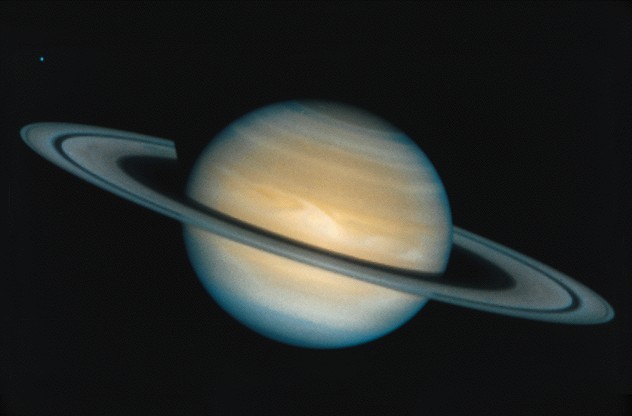
Jupiter's
ring
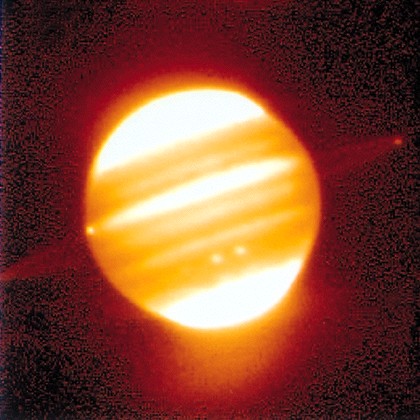
Ringlets
seen from Voyager (Sunward side)
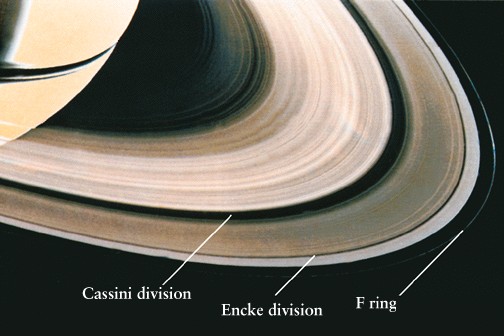
F-ring

Rings
backlit by Sun. Cassini division is white,
B-ring
is purple
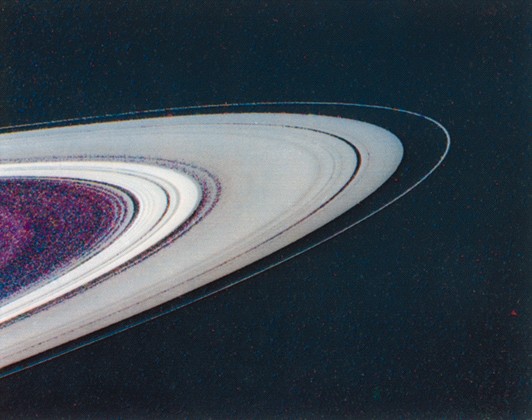
Effect
of Saturn's Inner Satellites
-
Moon Mimas responsible for
Cassini division
-
Mimas period 22.6 days
-
Cassini division particles
period 11.3 days
-
2-to-1 resonance
-
Where else do we see this
effect?
-
Kirkwood
gaps in Asteroid belt
-
What
planet causes Kirkwood gaps?
-
Pandora and Prometheus are
shepherd moons for F ring
-
Pan causes Enke gap
-
Rings themselves are not
uniform all the way around
-
See "Structure of Saturn's
Rings movie" on CD ROM
-
Radial spokes/shadows might
be caused by Saturn's magnetic field
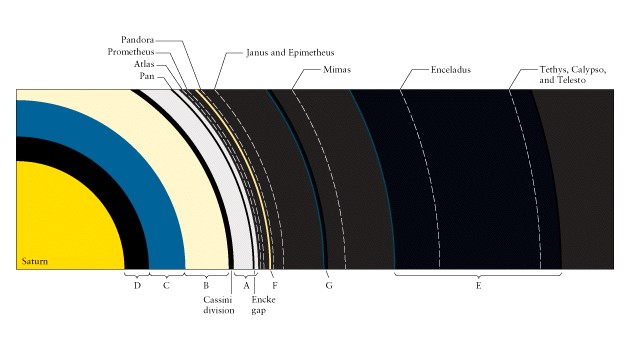
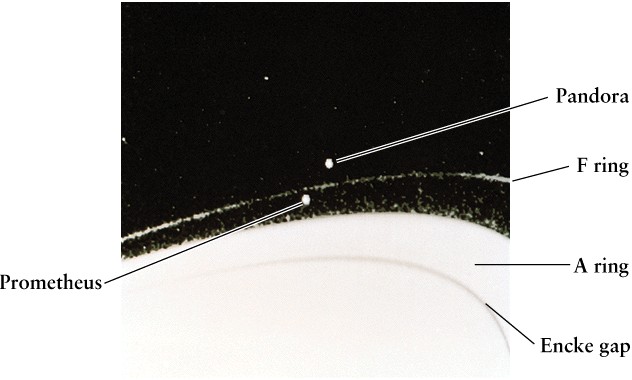
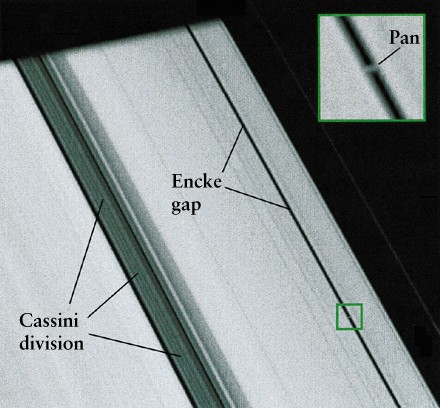
Saturn's
Rings Summary
-
Seeing
Saturn's rings from Earth
-
Now
you see them, now you don't
-
Saturn's
27 degree inclination
-
A,
B, C, ..., Cassini division
-
Composition
of rings
-
Structure
of rings
-
Effect
of Saturn's inner Satellites
-
Cassini
probe will orbit Saturn starting in 2004
-
More
textbook chapters will be needed!













